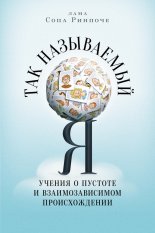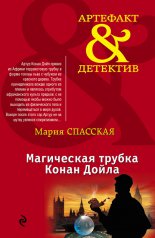Евангелие от атеиста Богоссян Питер

Круз, Том (человеческое тело: 1962–) (Тэтан: несколько миллиардов лет)
Популярный американский киноактер и продюсер. В 2004 году получил медаль Свободы от церкви сайентологии.
Логическая возможность
Логически возможное утверждение без применения противоречия. Например, «Существует золотая гора» – логически это возможно. Может существовать гора, созданная из золота. Однако заявление «Квадрат – это круг» логически невозможно, поскольку определение квадрата не дает ему возможность быть кругом. (Если вы можете представить себе что-то, что не противоречит законам логики.)
Лютер, Мартин (1483–1546)
Немецкий теолог. Центральная фигура в протестантизме.
Ману
Понятие индуистской мифологии; боги создали Ману, ставшего прародителем человечества.
Мем
Идея или образ, которые распространяются от человека к человеку.
Метафизика
Раздел философии, изучающий «бытие», «первопричину» и «что существует».
Мультикультурализм
Доктрина, утверждающая, что возможно создать общество, в котором многие культуры будут мирно уживаться друг с другом.
Наблюдательный совет института (Institutional Review Board; IRB)
Выдает разрешения, отслеживает и рецензирует все исследования, в которых в качестве испытуемых выступают люди.
Научный метод
Процедура, используя которую, можно провести объективное исследование.
Оборонительная тактика
Самозащита от критицизма, личных недостатков, всего, что не соответствует картине мира или воспринимается как угроза ей.
Обоснование
Достаточные основания для убеждения.
Одитинг
Религиозная практика сайентологов, во время которой одитор (священник) задает преклиру (человеку, который получает одитинг) стандартизированные вопросы или дает указания.
Основание
Достаточное обоснование для заявления.
Ошибка выборки
«Ошибка выборки бывает в двух случаях: 1) самоотбор индивидов для участия в опросе или экспериментальном исследовании; 2) использование учеными выборок или исследований, подтверждающих конкретную гипотезу». Словарь скептиков: http://skepdic.com/selectionbias.html
Патогенное убеждение
Убеждение, которое прямо или косвенно ведет к эмоциональной, психологической или физической патологии.
Педагогика
Методология и практика преподавания.
Переносчик
Организм, который переносит заразные болезнетворные микроорганизмы, но не демонстрирует симптомов.
Пифия
Также известная как дельфийский оракул. Пифия была жрицей храма Аполлона в Дельфах, на склоне горы Парнас; мудрая женщина и прорицательница.
Плюрализм
Мирное сосуществование двух и более государств, существ, культур или феноменов.
Предвзятость подтверждения
Тенденция подтверждать информацию, которая соответствует убеждениям человека.
Просвещение (Новое Просвещение)
«Стадия взросления в развитии человечества, его решимость отказаться от детских вещей, твердо встать на ноги, отказаться от опеки и, прежде всего, использовать свой разум и думать самостоятельно» (Thrower, 2000).
Релятивизм
Абсолютной истины не существует, либо ее невозможно установить.
Сверхъестественное
Находящееся за пределами существования реального мира.
Субъективное заявление
Заявление о предпочтениях, которое не является ни истинным, ни ложным.
Теорема Байеса
Определяет вероятность какого-либо события на основе множества расчетов.
Терапевтический альянс
Связь между терапевтом и клиентом, позволяющая клиенту достичь терапевтических успехов. Впервые этот термин (терапевтический альянс, или терапевтические отношения) появился в статье Эдварда Бордина в 1979 году «Генерализируемость психоаналитического концепта рабочего союза» (Bordin, 1979).
Терапия
Терапевтический процесс, ведущий к восстановлению чего-то поврежденного.
Тэтан
Убеждение сайентологов о духе, «застрявшем» в человеческом теле.
Фальсифицируемый
Способный доказать свою ложность. Обычно применяется к гипотезам.
Феминизм
Равные права для женщин.
Фундаментализм (в эпистемологии) (также фундаменталистская теория истины)
Убеждения обосновываются на базе «фундаментальных» убеждений.
Хадис
Действия или высказывания, приписываемые мусульманскому пророку Мухаммеду, не отраженные в Коране.
Херефон
Близкий друг Сократа. Фигурирует в платоновских диалогах «Апология», «Хармид» и «Горгий».
Четыре всадника
Ричард Докинз, Дэниел Деннет, Сэм Харрис и Кристофер Хитченс. Выражение «Четыре всадника» взято из Книги Откровения Нового завета.
Шермер, Майкл (р. 1954)
Издатель-основатель журнала «Sceptic», исполнительный директор Общества скептиков, автор ежемесячной колонки в «Scientific American», организатор Общества скептиков и автор многочисленных бестселлеров.
Эмпирическое заявление
Заявление об окружающем мире.
Эпистемологический
Связанный с познанием.
Эпистемология
Наука о познании.
Список литературы
Acock, А. С, & Bengston, V.L. (1980). Socialization and attribution processes: Actual versus perceived similarity among parents and youth. Journal of Marriage and Family, 42, 501–515.
Agee, J. (2009). A death in the family (Centennial ed.). New York, NY: Penguin Books.
Ali, M., & Ali, H.Y. (2004). The soul of a butterfly: Reflections on life s journey. New York, NY: Simon & Schuster.
American Philosophical Association. (1990). Critical thinking: A statement of expert consensus for purposes of educational assessment and instruction. “The Delphi Report.” Millbrae, CA: The California Academic Press.
American Psychiatric Association. (2000). Diagnostic and Statistical Manual of Mental Disorders DSM-IV (4th ed.). Washington, DC: American Psychiatric Association.
American Psychiatric Association (2012). АРА DSM-5. Frequently Asked Questions. URL: http://www.dsm5.org/ABOUT/Pages/faq.aspx
Anderson, S.D. (2010). Living dangerously: Seven keys to intentional discipleship. Eugene, OR: Wipf & Stock Pub.
Andrews, D.A., & Friesen, W. (1987). Assessments of Anticriminal Plans and the Prediction of Criminal Futures. Criminal Justice and Behavior, 14(1), 33–37.
Andrews, D.A., Zinger, I., Hoge, R.D., Bonta, J., Gendreau, P., & Cullen, F.T. (1990). Does correctional treatment work? A clinicallyrelevant and psychologically-informed meta-analysis. Criminology, 28(3), 369–404.
Andrews, S. (2013). Deconverted: A journey from religion to reason. Denver, Colorado: Outskirts Press.
Argyle, M. (2000). Psychology and religion: An introduction. London, England: Routledge.
Baltag, A., Rodenhauser, В., & Smets, S. (2011). Doxastic attitudes as belief-revision policies. (Unpublished manuscript). ILLC, University of Amsterdam Amsterdam, Netherlands.
Bandura, A. (1990). Mechanisms of moral disengagement. InW. Reich (Ed.), Origins of terrorism: Psychologies, ideologies, theologies, states of mind (pp. 161–191). Washington, DC: Woodrow Wilson Center Press.
Bandura, A. (1999). Moral disengagement in the perpetration of inhumanities. Personality and Social Psychology Review, 3, 193–209. doi:10.1207/s15327957pspr0303_3
Bandura, A. (2002). Selective moral disengagement in the exercise of moral agency. Journal of Moral Education, 31(2), 102–119. doi:10.1080/ 0305724022014322
Bartlett, T. (2012, August 13). Dusting off God: A new science of religion says God has gotten a bad rap. The Chronicle of Higher Education. URL: http://chronicle.com/article/Does-Religion-Really-Poison/133457/
Barker, D.L. (Performer). (2012). Making the case for atheists. [Web Video]. URL: http://www.youtube.com/watch?v=e7y5slOkwaU&feature=player_embedded
Barker, D. (2008). Godless: How an evangelical preacher became one of America’s leading atheists. Berkeley, CA: Ulysses Press.
Bausell, R.B. (2007). Snake oil science: The truth about complementary and alternative medicine. Oxford: Oxford University Press.
Bering, J. (2011). The belief instinct: The psychology oj souls, destiny, and the meaning of life. New York, NY: W.W. Norton & Company, Inc.
Berns, G.S., Bell, E., Capra, С M., Prietula, M.J., Moore, S., Anderson, B.,… Atran, S. (2012). The price of your soul: Neural evidence for the non-utilitarian representation of sacred values. Philosophical Transactions of The Royal Society, 367(1589), 754–762. doi:10.1098/rstb.2011.0262
Bernstein, R., & Gaw, A. (1990). Кого: Proposed classification for DSMIV The American Journal oj Psychiatry, 747(12), 1670–1674.
Bishop, B. (2008). The big sort: Why the clustering oj like-minded America is tearing us apart. New York, NY: Houghton Mifflin Company.
Blackford, R. (2012a, August, 8). Islam, racists, and legitimate debate. Talking Philosophy: The Philosophers’ Magazine Blog. URL: http://blog.talkingphilosophy.com/?p=5305
Blackford, R. (2012b). Freedom of religion and the secular state. West Sussex, England: Wiley-Blackwell.
Blume, A.W., Schmaling, К.В., & Marlatt, G.A. (2000). Revisiting the self-medication hypothesis from a behavioral perspective. Cognitive and Behavioral Practice, 7(4), 379–384. doi:10.1016/S1077–7229(00)80048–6
Boghossian, P.A. (2006c). Fear of knowledge: Against relativism and constructivism. Oxford: Clarendon Press.
Boghossian, P. (2002a). Socratic pedagogy, race and power. Education Policy Analysis Archives, 10, 3. URL: http://epaa.asu.edu/ojs/article/view/282
Boghossian, P. (2002b). The Socratic method (or, having a right to get stoned). Teaching Philosophy, 25(4), 345–359. doi:10.5840/teachphil200225443
Boghossian, P. (2003). How Socratic pedagogy works. Informal Logic, 23(2), TS17–25.
Boghossian, P. (2004). Socratic pedagogy, critical thinking, moral reasoning and inmate education: An exploratory study. (Unpublished doctoral dissertation). Portland State University. Portland, OR.
Boghossian, P. (2006a). Socratic pedagogy, critical thinking, and inmate education. Journal oj Correctional Education, 57(1), 42–63.
Boghossian, P. (2006b). Behaviorism, constructivism, and Socratic pedagogy. Educational Philosophy and Theory, 38(6), 713–722. doi: 10.1111/j. 1469–5812.2006.00226.x
Boghossian, P. (2010). Socratic pedagogy, critical thinking, and offender programming. Offender Programs Report, 13(5), 65–80.
Boghossian, P. (2011a). Critical thinking and constructivism: Mambo dog fish to the banana. Journal of Philosophy of Education, 46(1), 73–84. doi: 10.1111/j. 1467–9752.2011.00832.x
Boghossian, P. (2011b). Socratic pedagogy: Perplexity, humiliation, shame and a broken egg. Educational Philosophy and Theory, 44(7), 710–720. doi:10.1111/j.1469–5812.2011.00773.x
Boghossian, P. (2011c, July). Should we challenge student be1iefs? Inside Higher Ed. URL: http://www.insidehighered.com/views/2011/07/192/boghossian
Boghossian, P. (2012). Faith no more. The Philosophers’ Magazine, 59, 15–16.
Bogue, В., Diebel, J., & O’Connor, T.P. (2008). Combining officer supervision skills: Anew model for increasing success in community corrections. Perspectives, Spring, 2(32), 30–45.
Bonta, J., & Andrews, D. (2010). Viewing offender assessment and rehabilitation through the lens of the risk-needs-responsivity model. In F. McNeill, P. Rayner & С Trotter (Eds.), Offender supervision: New directions in theory, research and practice (pp. 19–40). New York: Willan Publishing.
Bordin, E.S. (1979). The generalizability of the psychoanalytic concept of the working alliance. Psychotherapy: Theory, Research, and Practice, 16(3), 252–260.
Bortolotti, L. (2010). Delusions and other irrational beliefs. Oxford: Oxford University Press.
Bostrom, N. (2003). Are you living in a computer simulation? Thе Philosophical Quarterly, 53(211), 243–255.
Bostrom, N. (May/June 2008). Where are they?: Why I hope the search for extraterrestrial life finds nothing. MIT Technology Review. URL: http://www.technologyreview.com/article/409936/where-are-they/
Boyer, P. (2001). Religion explained: The evolutionary origins of religious thought. New York, NY: Basic Books.
Boyer, P. (2004, March/April). Why is religion natural? Skeptical Inquirer, 28.2, URL: http://www.csicop.org/si/show/why_is_religion_natural/
Braithwaite, V. & Levi, M. (Eds.). (1998). Trust and governance (Russell Sage Foundation series on trust, volume I). New York, NY: Russell Sage Foundation.
Brock, T.C., & Balloun, J.L. (1967). Behavioral receptivity to dissonant information. Personality and Social Psychology, 6(4, Pt.l), 413–428. doi:10.1037/h0021225
Brodie, R. (1996). Virus of the mind: The new science of the тете. Carlsbad, CA: Hay House, Inc.
Brown, S. (2012, October 2). The 10 most dangerous religious right organizations. Network for Church Monitoring. URL: http://www.alternet.org/belief/10-most-dangerous-religious-right-organizations
Brutus, S. (2012). Religion, Culture, History: A Philosophical Study of Religion. Portland, OR: Daimonion Press.
Carrier, R. (2012). Atheism IS an Identity. URL: http://freethoughtblogs.com/carrier/archives/337/
CBS News. (2012, August 16). More Americans identifying as atheists. URL: http://www.cbn.com/cbnnews/us/2012/August/More-Americans-Identifying-as-Atheist/
CDC. (2012). Centers for Disease Control and Prevention. URL: http://www.cdc.gov/24–7/CDCFastFacts.html
Chambers, A. (2009). Eats with sinners: Reaching hungry people like Jesus did. Cincinnati, OH: Standard Pub.
Christian, J.L. (Ed.). (2011). Philosophy: An introduction to the art of wondering. (11th ed., pp. 51). Boston, MA: Wadsworth.
Christina, G. (2012). Why are you atheists so angry? 99 things that piss off the Godless. Charlottesville, \A: Pitchstone.
Clarke, M.L. (1968). The Roman mind: Studies in the history of thought from Cicero to Marcus Aurelius . New York, NY: W.W. Norton & Company, Inc.
Clark, С.M. (1992). Deviant adolescent subcultures:
Assessment strategies and clinical interventions. Adolescence, 27(106), 283.
Clifford, W. (2007). The ethics of belief. In D. Basinger, W. Hasker, M. Peterson & B. Reichenbach (Eds.), Philosophy of religion: Selected readings (3rd ed., pp. 104–109). New York, NY: Oxford University Press, Inc.
CNN. (2008). Election exit polls. URL: http://www.cnn.com/ELECTION/2008/results/polls/
Comfort, R. (2009). You can lead an atheist to evidence, but you can’t make him think. Los Angeles, CA: WorldNetDaily.
Coffey, С (2009). ,4s / see it. Bloomington, IN: AuthorHouse.
Covey, S.R. (2004). The 7 habits of highly effective people. New York, NY: Free Press.
Cragun, R., Yeager, S., & Vega, D. (2012). How secular humanists (and everyone else) subsidize religion in the United States. Free Inquiry, 32(4). URL: http://www.secularhumanism.org/index.php?section=fi&page=cragun_32_4
Craig, W.L. (ad.). Christian apologetics: Who needs it? Reasonable Faith. URL: http://www.reasonablefaith.org/christian-apologetics-who-needs-it
Craig, W.L. (2003). Hard questions, real answers, (pp. 35). Wheaton, IL: Crossway Books.
Curtis, J.Т., Silberschatz, G., Sampson, H., Weiss, J., & Rosenberg, S.E. (1988).
Developing reliable psychodynamic case formulations: An illustration of the plan diagnosis method. Psychotherapy: Theory, Research, Practice, Training, 25(2), 256–265.
Dacey, A. (2012). The future of blasphemy: Speaking of the sacred in an age of human rights. London: Continuum
Davis, R. (2012, February 28). Apology for Afghan Quran burning was right. The Daily Athenaeum. URL: http://issuu.com/dailyathenaeum/docs/20122902
Dawkins, R. (Performer). (2005). Richard Daw kins: Why the universe seems so strange. [Web Video]. URL: http://www.ted.com/talks/richard_dawkins_on_our_queer_universe.html
Dawkins, R. (2006a). The god delusion. London, England: Bantam Press.
Dawkins, R. (2006b). Why I Won’t Debate Creationists. The Richard Dawkins Foundation for Reason and Science. URL: http://old.richarddawkins.net/articles/119-why-i-won-39-t-debate-creationists
Dawkins, R. (2007, October). In WH. Pryor (Moderator) debate between Richard Dawkins and John Lennox. The God delusion debate, Birmingham, AL. URL: http://old.richarddawkins.net/audio/1707-debate-between-richard-dawkins-and-john-lennox
Dawkins, R., & McKean, D. (2011). The magic oj reality: How we know what’s really true. New York, NY: Free Press.
Dennett, D. (2007). Breaking the spell: Religion as a natural phenomena. New York, NY: Penguin Group.
Dennett, D., & LaScola, L. (2010). Preachers who are not believers. Evolutionary Psychology, 8(1), 121–50.
DeWitt, J., & Brown, E. (2013). Hope after faith: An ex-pastor ‘s journey from belief to atheism. Cambridge, MA: Da Capo Press.
DiClemente, С. С, & Prochaska, J.O. (1998). Toward a comprehensive, transtheoretical model of change: Stages of change and addictive behaviors. In W.R. Miller & N. Heather (Eds.) Treating Addictive Behaviors (2nd ed.) (pp. 3–24). New York, NY: Plenum Press.
Doumit, P.E. (2010). A unification of science and religion. Pittsburg, PA: RoseDog Books.
Dozier, V. (2006). C.L. Shattuck & EH. Thompsett (Eds.), Confronted by God: The essential Verna Dozier (pp. 118). New York, NY: Church Publishing Inc.
Dubrow-Eichel, S.K. (1989). Deprogramming: An investigation of change processes and shifts in attention and verbal interactions (pp. 43–49, 52–53, 182–216). Philadelphia, PA: University Of Pennsylvania.
Dye, J. (2007, February 7). Socratic method and scientific method. URL: http://www.niu.edu/~jdye/method.html
Earley, D., & Wheeler, D. (2010). Evangelism is …: How to share Jesus with passion and confidence. Nashville, TN: B&H Academic Publishing Group.
Edwards, J.W. (1984). Indigenous Кого, a genital retraction syndrome of insular Southeast Asia: A Critical Review. Culture, Medicine and Psychiatry, 8, 1–24.
Erikson, J.A. (1992). Adolescent religious development and commitment: A structural equation model of the role of family, peer group, and educational influences. Journal for the Scientific Study of Religion, 37(2), 131–152.
Faccini, L. (2009). The incredible case of the shrinking penis: A Koro-like syndrome in an [sic] person with intellectually disability. Sexuality and Disability, 27(3), 173–178. doi:10.1007/slll95–009–9120–5
Falk, R. (2012, March 9). Koran burning in Afghanistan: Mistake, crime, and metaphor. [Web log message]. URL: http://richardfalk.wordpress.com/2012/03/09/koran-burning-in-afghanistan-mistake-crime-and-metaphor/
Faircloth, S. (2012). Attack of the theocrats! How the religious right harms us all—and what we can do about it. Charlottesville, VA: Pitchstone.
Fish, S. (2007, June 17). Atheism and evidence. [Web log message]. URL: http://opinionator.blogs.nytimes.com/2007/06/17/atheism-and-evidence/
Foerst, A. (2001). Do androids dream of bread and wine? In W. Richardson & G. Slack (Eds.). Faith in science: Scientists search for truth (pp. 197). New York, NY: Routledge.
Frankfurt, H.G. (2006). On truth. New York, NY: Alfred A. Knopf.
Frojan-Parga, M.X., Calero-Elvira, A., & Montano-Fidalgo, M. (2011). Study of the Socratic method during cognitive restructuring. Clinical Psychology & Psychotherapy, 18(2), 110–123.
Gal, D., & Rucker, D.D. (2010). When in doubt, shout!: Paradoxical influences of doubt on proselytizing. Psychological Science, 27(11), 1701–1707.
Gamponia, H.L. (2010). Great prescriptions to a better you. Pittsburgh, PA: RoseDog Books.
Gassner, S., Sampson, H., Weiss, J., & Brumer, S. (1982). The emergence of warded-off contents. Psychoanalysis and Contemporary Thought, 5(1), 55–75.
Gervais, W.M., & Norenzayan, A. (2012). Analytic thinking promotes religious disbelief. Science, 336(6080), 493–496. doi: 10.1126/science. 1215647
Grimley, D., Prochaska, J.O., Velicer, W.E., Blais, L.M., & DiClemente, С.С. (1994). The Transtheoretical Model of Change. In T.M. Brinthaupt & R.R. Lipka (Eds.). Changing the self: Philosophies, techniques, and experiences (pp. 201–228). Albany, NY: SUNY Press.
Gross, N., & Simmons, S. (2007). “The social and political views of American professors.” Unpublished manuscript, Harvard University, Cambridge, MA.
Haberrnas, G.R. (1996). The historical Jesus: Ancient evidence for the life of Christ. Joplin, MO: College Press Publishing Company, Inc.
Haberrnas, G.R. (1997). In defense of miracles: A comprehensive case for God’s action in history. Downers Grove, IL: InterVarsity Press.
Haberrnas, G.R., & Licona, M.R. (2004). The case for the resurrection of Jesus. Grand Rapids, MI: Kregel Publications.
Hallowell, B. (2012, May 15). A world without faith would be a world on the path to tragedy & disaster. The Blaze. URL: http://www.theblaze.com/stories/tony-blair-a-world-without-faith-would-be-a-world-on-the-path-to-tragedy-disaster/
Hanson, R. (1998, September 15). The great filter: Are we almost past it? URL: http://www.webcitation.org/5n7VYJBUd
Harris, A. (forthcoming). / Wonder.
Harris, S. (2004). The end of faith: Religion, terror and the future of reason. New York, NY: W.W. Norton & Company, Inc.
Harris, S. (2007, April 18). The empty wager [Web log message]. URL: http://newsweek.washingtonpost.com/onfaith/panelists/sam_harris/2007/04/the_cost_of_betting_on_faith.html
Harris, S. (2007b). Aspen Ideas Festival. URL: http://www.youtube.com/watch?v=KtN4-lwnHX4
Harrison, G.P. (2008). 50 reasons people give for believing in a god. Amherst, NY: Prometheus Books.
Harrison, G.P. (2013). 50 simple questions for every Christian. Amherst, New York: Prometheus Books.
Haught, J.F. (2008). God and the new atheism: A critical response to Dawkins, Harris, and Hitchens. Louisville, KY: John Knox Press.
Henriques, D.B. (2006a, October 11). Religion-based tax breaks: Housing to paychecks to books. The New York Times. URL: http://www.nytimes.com/2006/10/11/business/11religious.html?_r=2&oref=slogin&pagewanted=all
Henriques, D.В. (2006b, October 9). Where faith abides, employees have few rights. New York Times. URL: http://www.nytimes.com/2006/10/09/business/09religious.html?pagewanted=all
Hitchens, С (1995). The missionary position: Mother Teresa in theory and practice. London: Verso.
Hitchens, С (2007). The portable atheist: Essential readings for the nonbeliever. Philadelphia, PA: Da Capo.
HOfele, A., & Laque, S. (Eds.). (2011). Humankinds: The renaissance and its anthropologies. Berlin/New York: Walter de Gruyter GmbH.
Hoge, D.R., Petrillo, G., & Smith, E. (1982). Transmission of religious and social values from parents to teenage children. Journal of Marriage and the Family, 44, 569–579.
Holt, J. (2012, August 2). The basic question: Why does the world exist? The New York Times. URL: http://www.nytimes.com/2012/08/05/books/review/why-does-the-world-exist-by-jim-holt.html?pagewanted=all
Horowitz, L.M., Sampson, H., Siegelman, E.Y., Weiss, J., & Goodfriend, S. (1978). Cohesive and dispersal behaviors: Two classes of concomitant change in psychotherapy. Journal of Consulting and Clinical Psychology, 46(3), 556–564.
Horvath, А.О., & Luborsky, L. (1993). Journal oj Consulting and Clinical Psychology, 67(4), 561–573. doi:10.1037/0022–006X.61.4.561 Iannaccone, L.R. (1990). Religious practice: A human capital approach. Journal for the Scientific Study of Religion, 29, 297–314.
Jacobsen, K.A. (2011). Yoga powers: Extraordinary capacities attained through meditation and concentration. Leiden, Netherlands: Brill.






